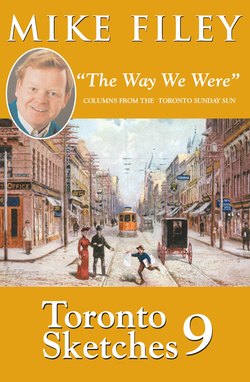Читать книгу Toronto Sketches 9 - Mike Filey - Страница 15
ОглавлениеSend in the Cavalry
John Marteison’s Second to None is a wonderful book published by Robin Brass Studios. In an easy-to-read text accompanied by dozens of rare and contemporary photographs, it details the fascinating history of the Governor General’s Horse Guards, one of Canada’s proudest military regiments. The regiment traces its lineage back to the earliest days of Ontario when in 1798 John Button, an American-born Loyalist, arrived in the Province of Upper Canada (Ontario). He settled in what is now the Town of Markham, where the name of the pretty little community of Buttonville continues to honour his memory.
Button established the province’s first cavalry unit, which served with distinction along the Niagara frontier during the War of 1812 as well as in the defence of Toronto (then called York) during the American invasion in the spring of 1813. It was during the Rebellion of 1837 that Button’s Troop joined forces with another local militia group under the command of George Taylor Denison, the progenitor of one of Toronto’s most influential families. A host of Denison names, birthplaces, and local homesteads is recorded in the titles of many city streets: Bellevue, Ossington, Dovercourt (correctly spelled Dover Court), Rusholme, Major, Robert, Lippincott, and little Rolyat (Taylor spelled backwards).
In 1853 these two cavalry units were combined to form the First Regiment York Light Dragoons. In 1866 royal assent was given to another change resulting in the name Governor General’s Bodyguard. Seventy years later this regiment amalgamated with the Mississauga Horse (another proud city regiment that had been gazetted in 1904) to become the Governor General’s Horse Guards. During its existence, in addition to service in the War of 1812 and the rebellious times of 1837, the regiment was active in the Fenian Raids of 1866, the 1885 North-West Rebellion, the South African War, two world wars, and the Korean conflict for which the Horse Guards recruited 223 men, the most of any Canadian militia unit.
Members of the Governor General’s Bodyguard parade at the Armouries on the east side of University Avenue, circa 1912. The name Armoury Street reminds us of this once-proud building through which thousands marched on their way overseas to defend freedom. Regrettably, the historic old structure was demolished in 1963.
* * *
That shuffling noise you’re hearing is the sound of thousands of Toronto Maple Leafs fans either getting on or getting off the bandwagon. One day the team’s a winner, going all the way. The next day, they’re a bunch of bums. But love ’em or hate ’em, they’re ours.
For me, a Leafs fan since that first game in 1941 played just days after I was born at old Grace Hospital on Bloor Street, it’s hard to believe that in such a hockey-mad community as Toronto one would have to be pushing 40 to have even been around when the city last won the coveted Stanley Cup. Nevertheless, hope springs eternal, and yes, I’ll say it, this is our year. Or maybe it will be next year, or the next . . .
Actually, March 16, the day this column first appeared, is an important date in the long and illustrious history of the Toronto Maple Leafs. On that date the team under coach Howie Meeker set a record that still stands. It was during one of those good old-fashioned Saturday night games when the National Hockey League was still made up of a mere half-dozen teams (and you could actually see the players’ faces) that our guys plastered the Rangers from New York 14–1. That was (and still is) the most goals scored by a Leafs team in one game. As great a feat as that was, it didn’t help. The team finished fifth that year and out of the playoffs.
Nevertheless, here are some names from that March 16, 1957, game that will bring back happy hockey memories for many. Hat tricks against the Rangers’ goalie “Gump” Worsley were scored by Brian Cullen and Sid Smith, with Tod Sloan and Ron Stewart scoring a pair each. Singles went to Al MacNeil, George Armstrong, Dick Duff, and Rudy Migay. The only Leafs who didn’t score at least one point in that memorable game were Jim Thompson and goalie Ed Chadwick.
Ted “Teeder” Kennedy was the captain of the Toronto Maple Leafs team that scored 14 goals on March 16, 1957, the most scored by a Leafs squad in one game. Here he is hugging the Stanley Cup when the Leafs were 1950–51 champions. By the way, when was the last time you saw a Leaf hug the Stanley Cup? Or are you still waiting?
Here’s another interesting fact about that particular match. Its outcome was reported in one city newspaper a full day before any of the other papers told the story. Why? Because the Sunday following the game, March 17, 1957, was the day Toronto finally got a Sunday newspaper, in this case the Sunday Telegram. Well ahead of its time (the first Sunday Sun didn’t appear for another 16 years), the idea of a Sunday newspaper was too “radical” for the times and the Sunday Telegram lasted less than a year.
March 16, 2003
